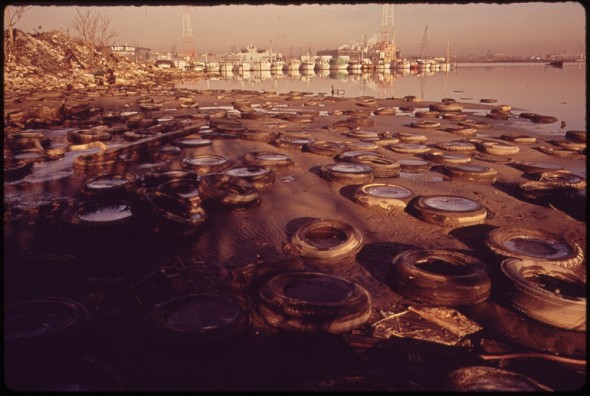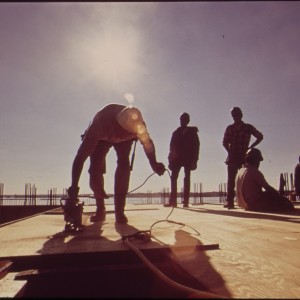By Codi Kozacek
Circle of Blue
Water pollution in the United States inhibits the use of enough river miles to stretch to the moon and back, and enough lake acres to cover an area larger than Switzerland. These waters are listed as “impaired” by the states and the EPA.
For rivers and streams, the most common pollutants are bacteria, including E. Coli and fecal coliform, followed by sediments, nutrients like nitrogen and phosphorus, and mercury. For lakes, mercury contamination is by far the most prevalent pollution problem, impairing more than twice as many acres as nutrients, the next most common pollutant. The Clean Water Act addressed most end-of-pipe sources of these pollutants. What remains are vast tracts of farmland and urban spaces where rain runoff picks up contaminants, or, in the case of mercury, air pollution that can travel from as far away as China and India.
While the Clean Water Act calls for actions to address nonpoint sources of pollution, it does not include a regulatory mechanism. As a result, efforts to clean up nonpoint pollution have so far struggled to make significant progress. Despite large-scale, multi-state projects to restore Chesapeake Bay and reduce the Gulf of Mexico dead zone, for example, water quality has remained stubbornly poor. This year, the Gulf dead zone stretched across nearly 17,000 square kilometers (6,474 square miles), according to the National Oceanic and Atmospheric Administration; the target size is 4,900 square kilometers (1,900 square miles). Chesapeake Bay, while showing signs that pollution is declining and conditions are improving, still scored a D+ on its annual water quality assessment.
Individual states have been slow to implement controls. In April, Ohio became the first state to ban manure and fertilizer applications on frozen ground when it passed a law in response to the Toledo water crisis.
“The EPA has the wherewithal to address those issues, it just needs to have the political will to do it,” Bob Irvin, president of conservation organization American Rivers, told Circle of Blue. “Congress needs to both allow the EPA to do this without interference and provide the funding to make this happen. It shouldn’t have to take a city the size of Toledo to have its drinking water shut down for several days, as happened last summer, to get us to wake up to the need to address these problems.”
There is growing interest in voluntary programs to cut nutrient pollution, much of which comes from agricultural lands, but many farmers are concerned about regulations, according to Lynn Scarlett, global managing director for public policy at The Nature Conservancy and former Deputy Secretary of the Interior during the second Bush administration.
“I don’t think the issue is either or,” Scarlett told Circle of Blue. “We’ve seen voluntary measures being very successful in some instances. One of the challenges is when you are dealing with large watersheds, how do you get everyone engaged? That’s where incentive programs can be really important.”
“One key to the success of any of these collaborative endeavors is resources and funding for them,” Scarlett continued. “The Farm Bill has put forth lots of funds over many, many years to contribute to best management practices and advancing some of these efforts, and it is important that that continues. While those help invest in farms and farmers, what we also need are funds to help invest in the collaborative processes themselves.”
A news correspondent for Circle of Blue based out of Hawaii. She writes The Stream, Circle of Blue’s daily digest of international water news trends. Her interests include food security, ecology and the Great Lakes.
Contact Codi Kozacek




